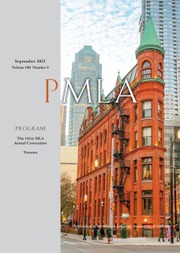The Use of Color Words by Edgar Allen Poe
Published online by Cambridge University Press: 02 December 2020
Extract
In that rich volume, The Decline and Fall of the West, we observe that the color preferences of a given people or age are considered as a part of the accumulated evidence that finally places the cultural stage of the group in the whole vast Spenglerian cycle. The Greeks, we learn, were fond of primitive reds and yellows, while the Christians, partly in revolt against Greek paganism, came to prefer the other end of the color scale, the greens and blues, and the purity of white. Red had become for them a symbol of sin and bloodshed, and yellow a mark of shame. These observations are further tied up with Spengler's time-space theories. The Greeks, whose time-space conceptions are labelled as present, as contrasted with our own efforts to link the dim past and the remote future by the aid of our historical and evolutionary perspective, are said naturally to prefer red and its variants as symbolic of life, love, and splendid action; while the Christians as naturally preferred the more remote greens, blues, and whites as symbolic of meditation and worship, the projection of interest into the mystic, the supernatural, the life yet unrealized. A later romantic development also associated blues and greens with nature and its poetry, while whites, grays and blacks inevitably spell the abstract, the psychic, and the mystery of the unknown.
Information
- Type
- Research Article
- Information
- Copyright
- Copyright © Modern Language Association of America, 1930
- 3
- Cited by

